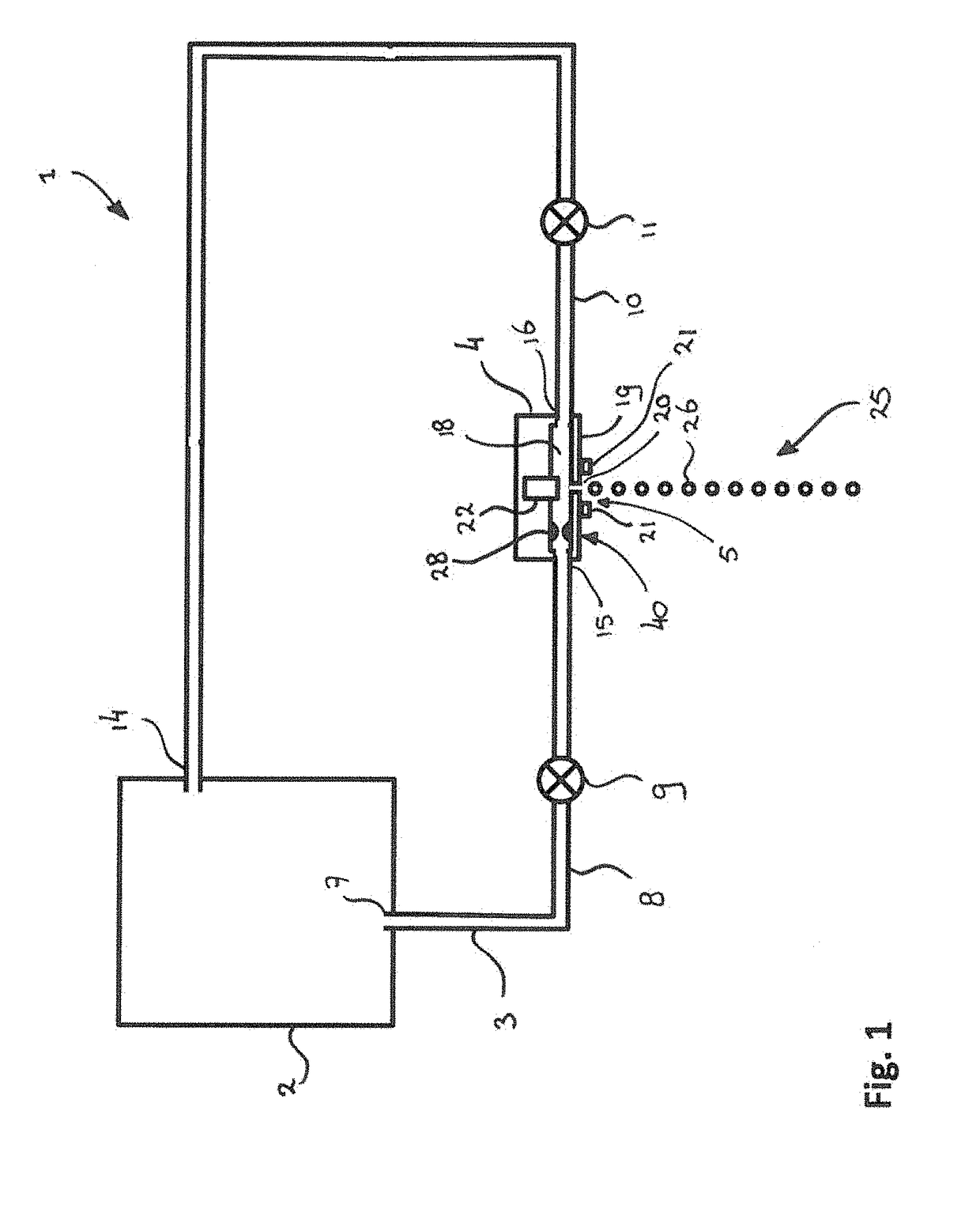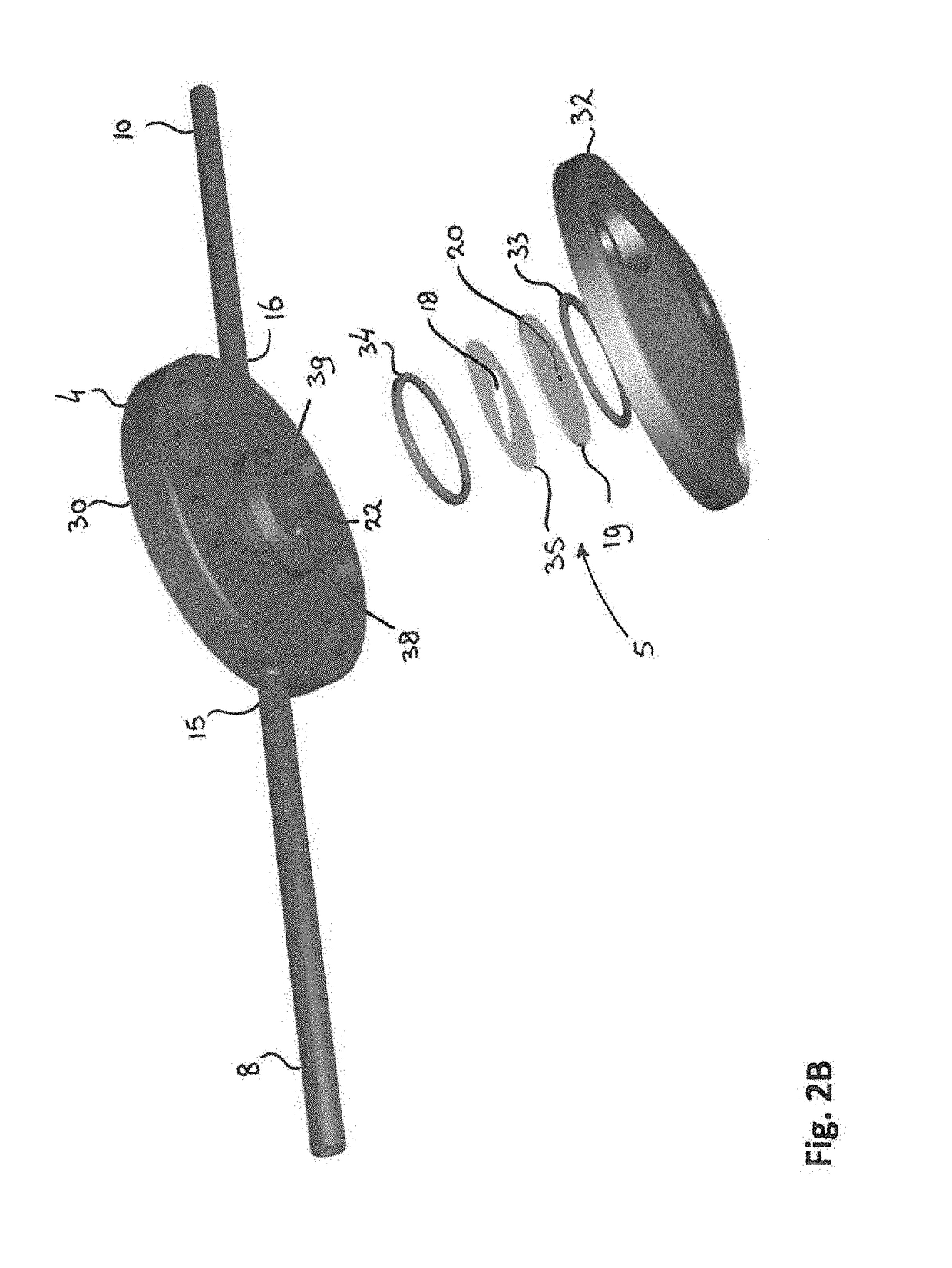Print head for printing a suspension fluid comprising particles, printing apparatus and method
a printing head and suspension fluid technology, applied in food shaping, food science, food coating and other directions, can solve the problems of clogging of the nozzle, affecting the printing effect, and affecting the printing effect, and achieve the effect of stable droplet flow and printing
- Summary
- Abstract
- Description
- Claims
- Application Information
AI Technical Summary
Benefits of technology
Problems solved by technology
Method used
Image
Examples
Embodiment Construction
[0035]A schematic illustration of the principles of a printing system or printing apparatus in accordance with the present invention is provided in FIG. 1. The printing apparatus 1 comprises a suspension fluid container 2. The suspension fluid container 2 comprises a suspension fluid which is to be printed using a print head 4 in accordance with the present invention. The suspension fluid may for example comprise a liquid including a suspension of particles. For example, the suspension fluid may be water including a suspension of a food ingredient in the form of particles. Instead of water, a different liquid having a different viscosity and different properties may be applied. For example, the liquid could be an oil having a suspension of the food ingredient. Instead of a food ingredient, the printing apparatus of the present invention may also be used for printing other suspensions, such as a liquid comprising a pharmaceutical component (e.g. a medicine in the form of a powder) or...
PUM
| Property | Measurement | Unit |
|---|---|---|
| height | aaaaa | aaaaa |
| height | aaaaa | aaaaa |
| height | aaaaa | aaaaa |
Abstract
Description
Claims
Application Information
 Login to View More
Login to View More - R&D
- Intellectual Property
- Life Sciences
- Materials
- Tech Scout
- Unparalleled Data Quality
- Higher Quality Content
- 60% Fewer Hallucinations
Browse by: Latest US Patents, China's latest patents, Technical Efficacy Thesaurus, Application Domain, Technology Topic, Popular Technical Reports.
© 2025 PatSnap. All rights reserved.Legal|Privacy policy|Modern Slavery Act Transparency Statement|Sitemap|About US| Contact US: help@patsnap.com



